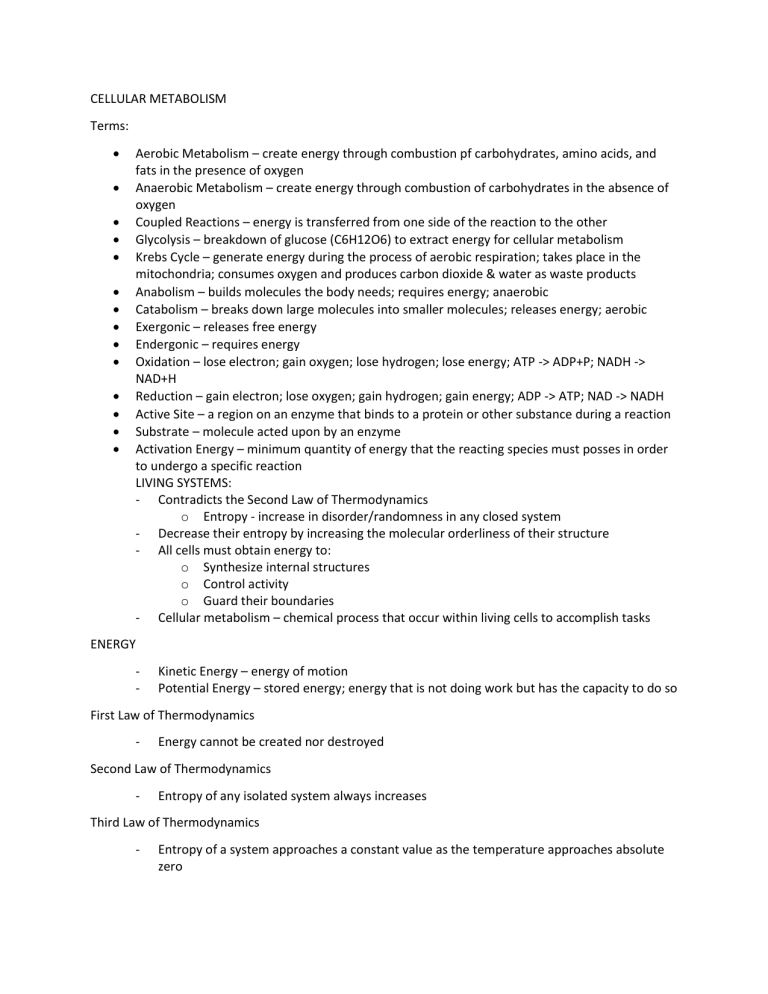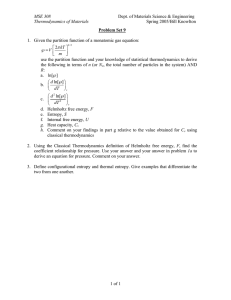
CELLULAR METABOLISM Terms: Aerobic Metabolism – create energy through combustion pf carbohydrates, amino acids, and fats in the presence of oxygen Anaerobic Metabolism – create energy through combustion of carbohydrates in the absence of oxygen Coupled Reactions – energy is transferred from one side of the reaction to the other Glycolysis – breakdown of glucose (C6H12O6) to extract energy for cellular metabolism Krebs Cycle – generate energy during the process of aerobic respiration; takes place in the mitochondria; consumes oxygen and produces carbon dioxide & water as waste products Anabolism – builds molecules the body needs; requires energy; anaerobic Catabolism – breaks down large molecules into smaller molecules; releases energy; aerobic Exergonic – releases free energy Endergonic – requires energy Oxidation – lose electron; gain oxygen; lose hydrogen; lose energy; ATP -> ADP+P; NADH -> NAD+H Reduction – gain electron; lose oxygen; gain hydrogen; gain energy; ADP -> ATP; NAD -> NADH Active Site – a region on an enzyme that binds to a protein or other substance during a reaction Substrate – molecule acted upon by an enzyme Activation Energy – minimum quantity of energy that the reacting species must posses in order to undergo a specific reaction LIVING SYSTEMS: - Contradicts the Second Law of Thermodynamics o Entropy - increase in disorder/randomness in any closed system - Decrease their entropy by increasing the molecular orderliness of their structure - All cells must obtain energy to: o Synthesize internal structures o Control activity o Guard their boundaries - Cellular metabolism – chemical process that occur within living cells to accomplish tasks ENERGY - Kinetic Energy – energy of motion Potential Energy – stored energy; energy that is not doing work but has the capacity to do so First Law of Thermodynamics - Energy cannot be created nor destroyed Second Law of Thermodynamics - Entropy of any isolated system always increases Third Law of Thermodynamics - Entropy of a system approaches a constant value as the temperature approaches absolute zero





